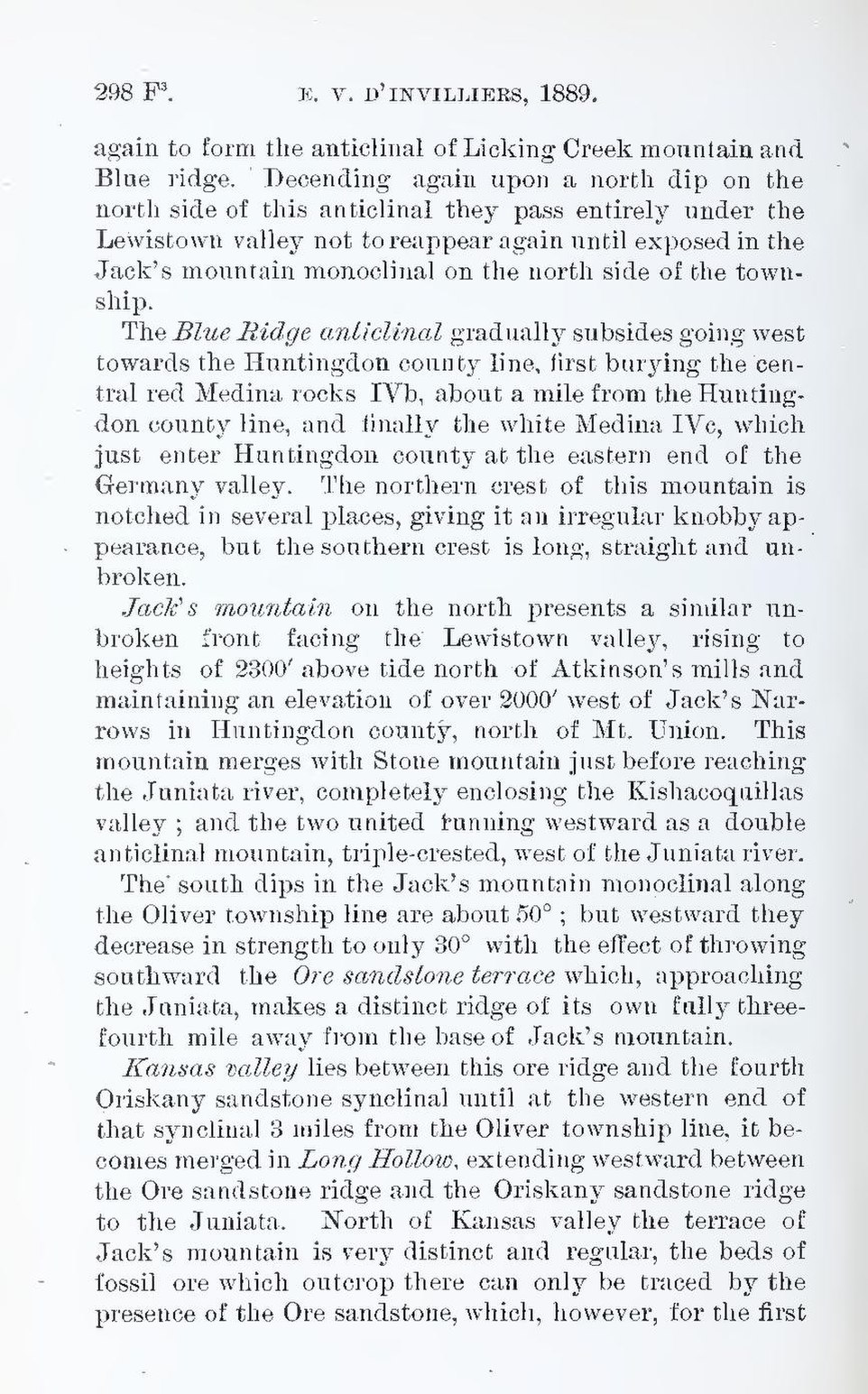again to form the anticlinal of Licking Creek mountain and Blue ridge. Descending again upon a north dip on the north side of this anticlinal they pass entirely under the Lewistown valley not to reappear again until exposed in the Jack’s mountain monoclinal on the north side of the township.
The Blue Ridge anticlinal gradually subsides going west towards the Huntingdon county line, first burying the central red Medina rocks IVb, about a mile from the Huntingdon county line, and finally the white Medina IVc, which just enter Huntingdon county at the eastern end of the Germany valley. The northern crest of this mountain is notched in several places, giving it an irregular knobby appearance, but the southern crest is long, straight and ubroken.
Jack’s mountain on the north presents a similar unbroken front facing the Lewistown valley, rising to heights of 2300′ above tide north of Atkinson’s mills and maintaining an elevation of over 2000′ west of Jack’s Narrows in Huntingdon county, north of Mt. Union. This mountain merges with Stone mountain just before reaching the Juniata river, completely enclosing the Kishacoquillas valley; and the two united running westward as a double anticlinal mountain, triple-crested, west of the Juniata river.
The south dips in the Jack’s mountain monoclinal along the Oliver township line are about 50°; but westward they decrease in strength to only 30° with the effect of throwing southward the Ore sandstone terrace which, approaching the Juniata, makes a distinct ridge of its own fully three-fourth mile away from the base of Jack’s mountain,
Kansas valley lies between this ore ridge and the fourth Oriskany sandstone synclinal until at the western end of that synclinal 3 miles from the Oliver township line, it becomes merged in Long Hollow, extending westward between the Ore sandstone ridge and the Oriskany sandstone ridge to the Juniata. North of Kansas valley the terrace of Jack’s mountain is very distinct and regular, the beds of fossil ore which outcrop there can only be traced by the presence of the Ore sandstone, which, however, for the first
